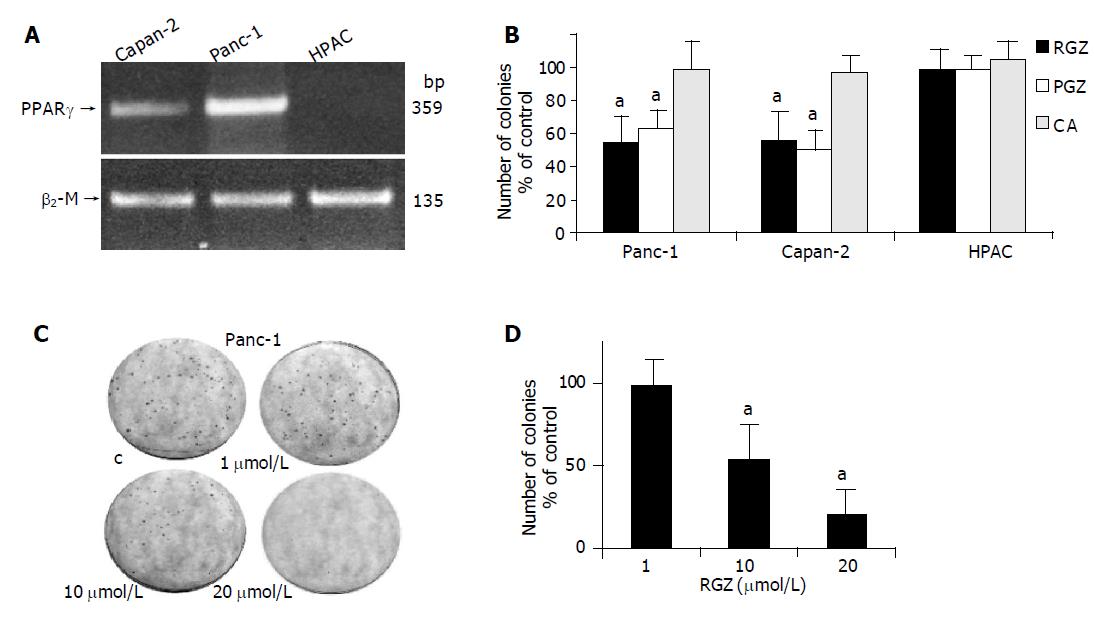Copyright
©2005 Baishideng Publishing Group Inc.
World J Gastroenterol. Feb 28, 2005; 11(8): 1122-1130
Published online Feb 28, 2005. doi: 10.3748/wjg.v11.i8.1122
Published online Feb 28, 2005. doi: 10.3748/wjg.v11.i8.1122
Figure 1 Effect of TZD on anchorage-independent growth in human pancreatic adenocarcinoma cells.
A: PPARγ expression in human pancreatic adenocarcinoma. One microgram of total RNA extracted from three pancreatic cancer cell lines (Capan-2, Panc-1, and HPAC) was reverse transcribed using random hexamers and amplified by polymerase chain reaction using specific primers for PPARγ and for β2-microglobulin (β2-M) as described in Methods. The reverse-transcription polymerase chain reaction products were electrophoresed on ethidium bromide-containing agarose gel; B: TZD inhibit anchorage-independent growth. 2x104 cells were plated into media containing 0.3% agarose, supplemented with either 10 µmol/L of TZD (RGZ o PGZ), or 1 mmol/L clofibrate (CA). After 14 d the number of colonies was determined and then expressed as the percentage of control cells treated with vehicle (DMSO) alone. The mean±SD of six independent experiments performed for each cell line in triplicate are shown. aP<0.05 (or higher degree of significance) vs control; C: Dose-dependent inhibition of anchorage-independent growth by TZD in Panc-1 cells. Clonogenic assay of Panc-1 cells treated with the indicated concentrations of RGZ was performed as described in Methods. The number of colonies was then given as the percentage of control cells treated with vehicle alone. The mean±SD of five independent experiments performed for each in triplicate are shown. aP<0.05 (or higher degree of significance) vs control.
- Citation: Ceni E, Mello T, Tarocchi M, Crabb DW, Caldini A, Invernizzi P, Surrenti C, Milani S, Galli A. Antidiabetic thiazolidinediones induce ductal differentiation but not apoptosis in pancreatic cancer cells. World J Gastroenterol 2005; 11(8): 1122-1130
- URL: https://www.wjgnet.com/1007-9327/full/v11/i8/1122.htm
- DOI: https://dx.doi.org/10.3748/wjg.v11.i8.1122









